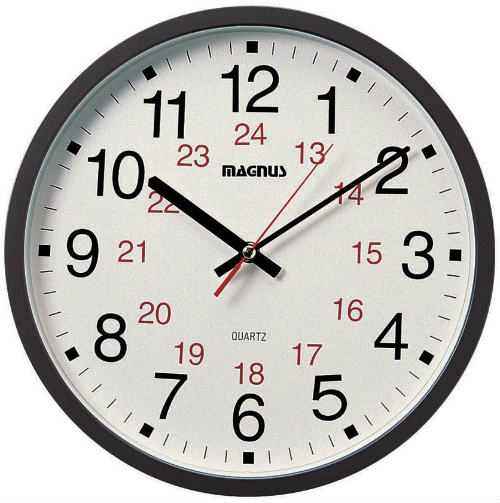
From a given observation point, a star found at one location in the sky will be found at nearly the same location on another night at the same sidereal time. This is similar to how the time kept by a sundial can be used to find the location of the Sun. Just as the Sun and Moon appear to rise in the east and set in the west due to the rotation of the Earth, so do the stars. Both solar time and sidereal time make use of the regularity of the Earth's rotation about its polar axis, solar time following the Sun while sidereal time roughly follows the stars. More exactly, sidereal time is the angle, measured from the observer's meridian, along the celestial equator, to the great circle that passes through the March equinox and both poles, and is usually expressed in hours, minutes, and seconds.[2] Common time on a typical clock measures a slightly longer cycle, accounting not only for the Earth's axial rotation but also for the Earth's annual revolution around the Sun of slightly less than 1 degree per day (in fact to the nearest arc-second, it takes 365.2422 days to revolve therefore 360 degrees/365.2422 days = 0.9856 degrees or 59 arc-minutes, 8 arc-seconds per day, i.e., slightly less than 1 degree per day).
A mean sidereal day is about 23 hours, 56 minutes, 4.0916 seconds (23.9344699 hours or 0.99726958 mean solar days), the time it takes the Earth to make one rotation relative to the vernal equinox.[clarification needed] (Due to nutation, an actual sidereal day is not quite so constant.) The vernal equinox itself precesses slowly westward relative to the fixed stars, completing one revolution in about 26,000 years, so the misnamed sidereal day ("sidereal" is derived from the Latin sidus meaning "star") is some 0.0084 seconds shorter than the Earth's period of rotation relative to the fixed stars.
The longer "true" sidereal period is called a stellar day by the International Earth Rotation and Reference Systems Service (IERS). It is also referred to as the sidereal period of rotation, or simply as the period of rotation or the rotational period.
Maps of the stars in the night sky use declination and right ascension as coordinates. These correspond to latitude and longitude respectively. While declination is measured in degrees, right ascension is measured in units of time, because it was most natural to name locations in the sky in connection with the time when they crossed the meridian.
In the sky, the meridian is the imaginary north to south line that goes through the point directly overhead (the zenith). The right ascension of any object crossing the meridian is equal to the current local (apparent) sidereal time, ignoring for present purposes that part of the circumpolar region north of the north celestial pole (for an observer in the northern hemisphere) or south of the south celestial pole (for an observer in the southern hemisphere) that is crossing the meridian the other way.
Because the Earth orbits the Sun once a year, the sidereal time at any given place and time will gain about four minutes against local civil time, every 24 hours, until, after a year has passed, one additional sidereal "day" has elapsed compared to the number of solar days that have gone by.








0 comments:
Post a Comment